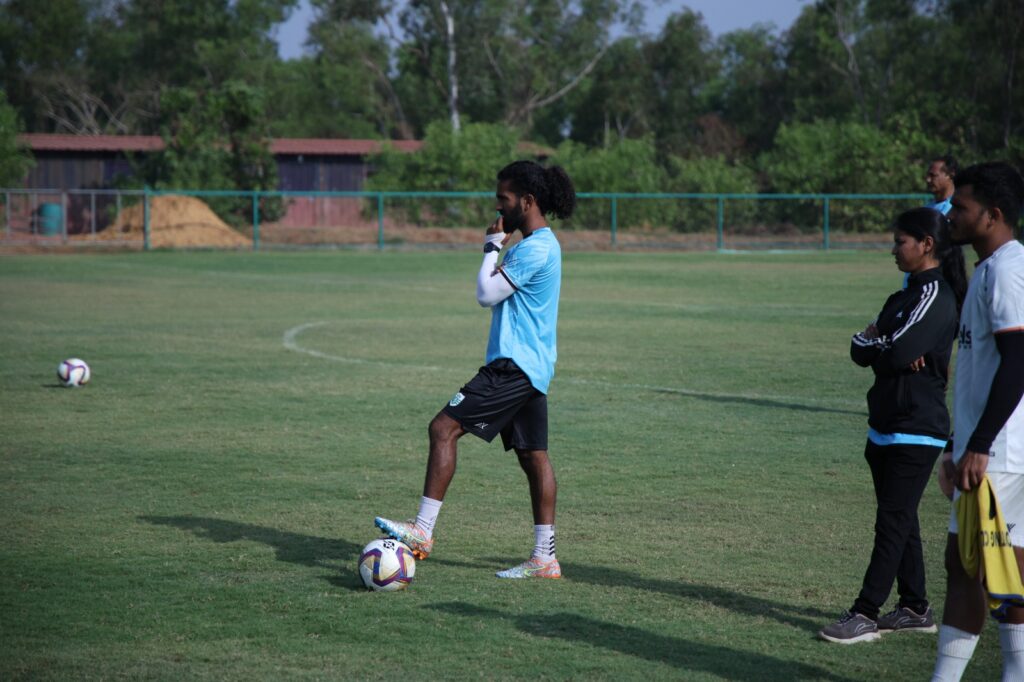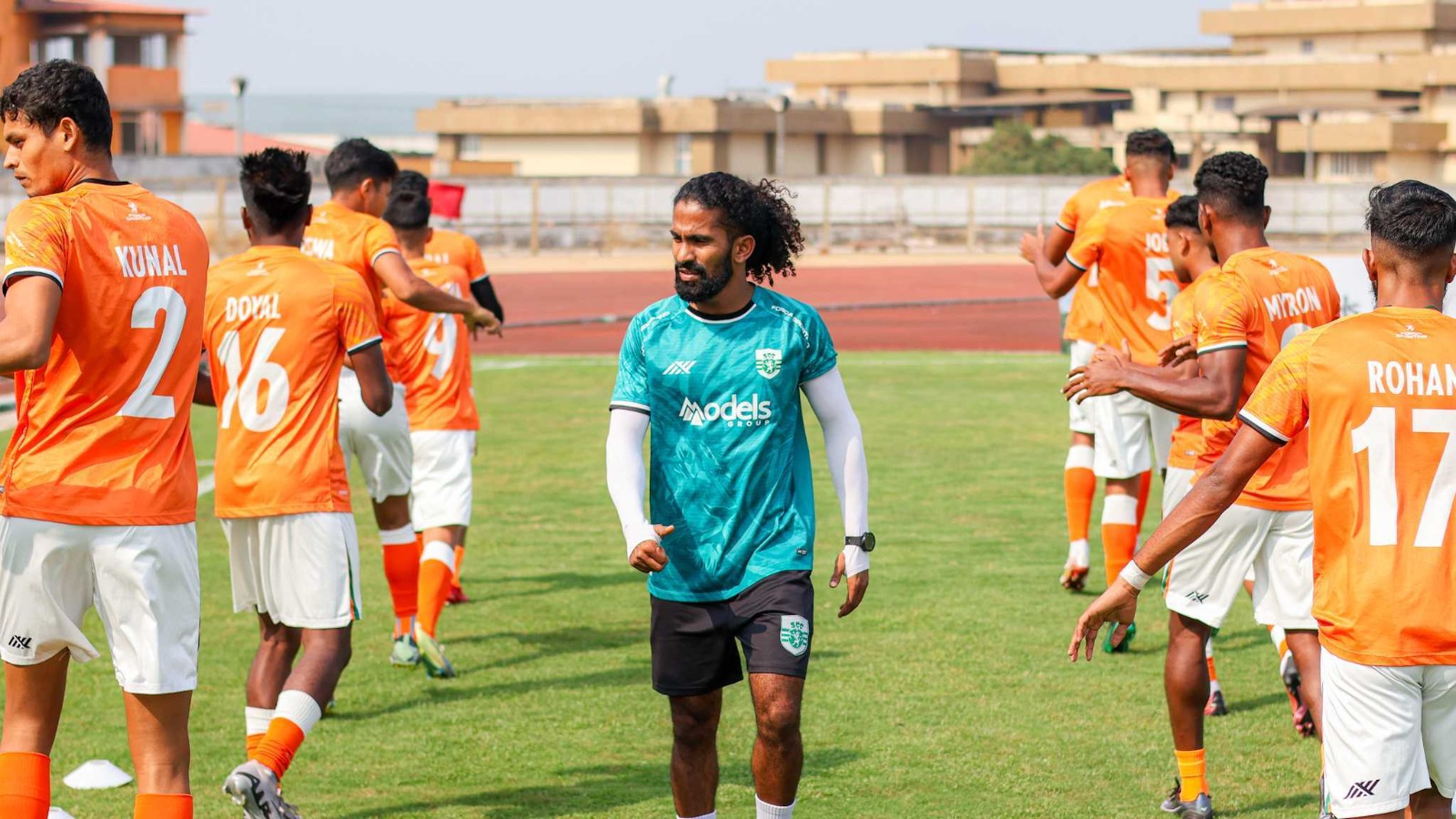
Manish Malik: Redefining Athlete Development Through Strength, Science, and Recovery
In the evolving landscape of Indian football, where physical performance is beginning to receive the attention it deserves, Manish Malik stands out as a pivotal force driving that change. At just 26, Manish is already making significant waves as the Head Strength & Conditioning Coach at Sporting Clube de Goa, one of the most respected clubs in the state.
Rooted in Hasapur, a small village in Pernem, Goa, Manish’s journey into elite performance training is a compelling story of transition, passion, and purpose. A former professional footballer himself, he experienced firsthand the lack of structured training and recovery systems available to athletes, a realization that ultimately became the foundation for his coaching philosophy.
“During my playing career, I realised how hard it was to access proper rehab, guidance, and high-performance programs. That’s when I knew I wanted to be the coach who could change that,” he shares.
Armed with certifications like the Australian Strength & Conditioning Level 1 and the AFC B Licence Diploma, Manish now channels over five years of hands-on experience into crafting individualised development plans for athletes, ensuring they not only train effectively but also recover with intent.
Recovery as the Core of Performance
Manish’s approach to athlete management at Sporting Clube de Goa is deeply rooted in recovery science. For him, recovery isn’t a secondary aspect, it’s the framework that holds consistent performance together.
“Training gets you fit, but recovery keeps you in the game,” he says. “Without adequate recovery, adaptations are limited and injury risks increase.” At Sporting, recovery is strategic.
Post-match protocols include ice baths, bodyweight hydration check-ups, protein supplementation, and a well-timed nutritious meal. For high-intensity matches or tournaments, the club follows a strict MD+1 to MD+2 recovery timeline, incorporating upper-body routines, mobility circuits, isometric work, hydrotherapy, and, when needed, sports massages to aid muscle flushing. This scientific, phased recovery model is supported by a collaborative team. Physiotherapists and S&C coaches work together, using internal load monitoring, soft tissue management, and wellness metrics to personalize protocols for each player.
Data-Driven Coaching
One of the key strengths of Manish’s coaching lies in his ability to blend objective metrics with intuitive athlete management. Fatigue and overtraining are tracked using a combination of GPS load data, Heart Rate Variability (HRV), Resting Heart Rate (RHR), and self-reported wellness scores. Players are encouraged to regularly communicate about physical and mental stress, fostering a culture of trust and openness. “You have to listen to both the data and the athlete,” he explains. “Sometimes the numbers look fine, but a player’s body language or feedback tells another story.”
Integrating Recovery into the Training Week
Recovery under Manish’s guidance is not reserved for post-match days alone. It’s an ongoing process. Daily training includes foam rolling, mobility blocks, active recovery circuits, and low-intensity pool sessions. Supplementation and hydration strategies, including electrolyte top-ups during training, are fine-tuned to support energy output and reduce recovery time between sessions. Meal timing, water intake, and nutrient-rich refueling are treated with the same importance as tactical drills or technical work.
Shaped by Mentors, Committed to Empowering Athletes
He feels fortunate to have worked with some incredible individuals who have played a significant role in shaping his journey. Coaches and mentors like Armando Colaco, Climax Lawrence, Hipolito Xavier Fernandes, Santil Mulgaokar, and Pradip Chopdekar have all had a profound impact on him. Through their experience, guidance, and belief in his potential, they helped him grow into the coach he is today, something he remains deeply grateful for.
Having witnessed how the lack of proper support can hold back talented athletes, he is committed to being the difference. His mission is to build systems and create spaces where athletes don’t just perform, they thrive.
Challenges in a Nascent Field
Despite his qualifications and experience, Manish admits the journey hasn’t been easy. Early in his career, Strength & Conditioning (S&C) was still a relatively misunderstood concept in Goa. Convincing clubs, coaches, and even physiotherapists of the long-term value of S&C professionals was a significant challenge. “Back then, S&C was just a buzzword. Many didn’t understand the depth or the science behind it,” he recalls. “It took time to change mindsets and create awareness, and I’m still working on that.” His resilience and commitment, however, have led to a culture shift at Sporting and among athletes who now actively seek structured performance guidance.
A Vision for the Future
Looking ahead, Manish has set his sights high. His ultimate ambition is to contribute to the Indian national team setup, providing top-tier performance support at the highest level. But he’s not stopping there. He envisions building a state-of-the-art high-performance centre in Goa, one that integrates world-class training, rehabilitation, and recovery systems under one roof. Through this centre, Manish hopes to nurture a new generation of Indian athletes who are technically sharp, physically elite, and mentally resilient.
“India has the talent,” he says. “What we need are systems that can consistently support that talent, and I want to be part of that system.”
From a small Goan village to the elite circles of Indian football performance, Manish Malik is a name steadily rising, not with noise, but with purpose. As the science of sport becomes central to athletic success, coaches like him are shaping a future where players don’t just play harder, but smarter.


